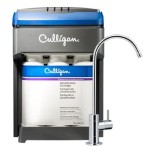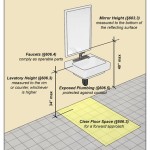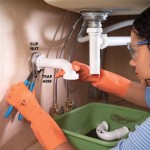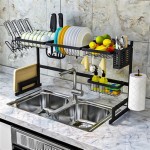Reverse Osmosis Water Filters Under Sink
Reverse osmosis (RO) water filters are a type of water filtration system that uses a semipermeable membrane to remove impurities from water. RO filters are effective at removing a wide range of contaminants, including heavy metals, bacteria, viruses, and pesticides. RO filters are often used in homes and businesses to provide clean, safe drinking water.
Under-sink RO filters are a popular choice for homeowners who want to improve the quality of their drinking water. Under-sink RO filters are installed under the kitchen sink and connect to the cold water line. The RO filter removes impurities from the water and then sends the filtered water to a storage tank. The filtered water can then be dispensed from the kitchen faucet.
Under-sink RO filters are relatively easy to install and maintain. The filters typically need to be replaced every six to twelve months. RO filters can be more expensive than other types of water filters, but they offer a number of advantages, including:
- RO filters remove a wide range of contaminants.
- RO filters provide clean, safe drinking water.
- RO filters are relatively easy to install and maintain.
If you are looking for a way to improve the quality of your drinking water, an under-sink RO filter is a good option. RO filters are effective at removing a wide range of contaminants and they provide clean, safe drinking water.
How Do Reverse Osmosis Water Filters Work?
Reverse osmosis water filters use a semipermeable membrane to remove impurities from water. The semipermeable membrane has pores that are small enough to allow water molecules to pass through, but they are too small for most impurities to pass through. The water is forced through the semipermeable membrane by a high-pressure pump. The impurities are left behind on the other side of the membrane.
The filtered water is then sent to a storage tank. The storage tank holds the filtered water until it is dispensed from the kitchen faucet.
What Are the Benefits of Reverse Osmosis Water Filters?
Reverse osmosis water filters offer a number of benefits, including:
- RO filters remove a wide range of contaminants.
- RO filters provide clean, safe drinking water.
- RO filters are relatively easy to install and maintain.
RO filters are effective at removing a wide range of contaminants, including:
- Heavy metals
- Bacteria
- Viruses
- Pesticides
- Chlorine
- Fluoride
RO filters provide clean, safe drinking water. RO filtered water is free of harmful contaminants and it tastes great. RO filtered water is also good for your health. RO filtered water can help to reduce your risk of developing a number of health problems, including:
- Cancer
- Heart disease
- Kidney disease
- Birth defects
RO filters are relatively easy to install and maintain. RO filters can be installed under the kitchen sink or in the basement. The filters typically need to be replaced every six to twelve months.
What Are the Disadvantages of Reverse Osmosis Water Filters?
Reverse osmosis water filters have a few disadvantages, including:
- RO filters can be expensive.
- RO filters waste water.
- RO filters can remove beneficial minerals from water.
RO filters can be expensive. The cost of an RO filter can range from $100 to $600. The cost of installation can also be expensive.
RO filters waste water. RO filters waste about 4 gallons of water for every 1 gallon of filtered water. This can be a problem in areas where water is scarce.
RO filters can remove beneficial minerals from water. RO filters remove all minerals from water, including beneficial minerals like calcium and magnesium. This can be a problem for people who need these minerals.
Are Reverse Osmosis Water Filters Worth It?
Reverse osmosis water filters are a good option for people who want to improve the quality of their drinking water. RO filters are effective at removing a wide range of contaminants and they provide clean, safe drinking water. However, RO filters can be expensive, they waste water, and they can remove beneficial minerals from water.
If you are considering purchasing an RO filter, it is important to weigh the pros and cons. RO filters are a good option for people who are concerned about the quality of their drinking water and who are willing to pay for the benefits. However, RO filters may not be the best option for people who are on a budget or who live in areas where water is scarce.

Puretec Ro270 Reverse Osmosis Water Filter System

Reverse Osmosis Water Filtration System 5 Stage Under Sink Fluoride Reducing Ro Filter 50 Gpd

4 Stage Reverse Osmosis System With Remineraliser Pure Water Systems

Cuzn 5 Stage Under Sink Reverse Osmosis System Water Filters

800gpd Tankless Reverse Osmosis Water Filter System 2 1 Efficiency

Ultra High Purity Reverse Osmosis Undersink The Water Filter

3m Water Filtration System Under Sink Reverse Osmosis 3mro301 04 04506 United Arab Emirates

Under Sink Reverse Osmosis Water Purifier Aquatru

Ge Under Sink 5 Stage Premium Reverse Osmosis Water Filtration System Gxrv40tbn The Home

Psi 021 4p Gm 4 Stage Reverse Osmosis Under Sink Premium Model







